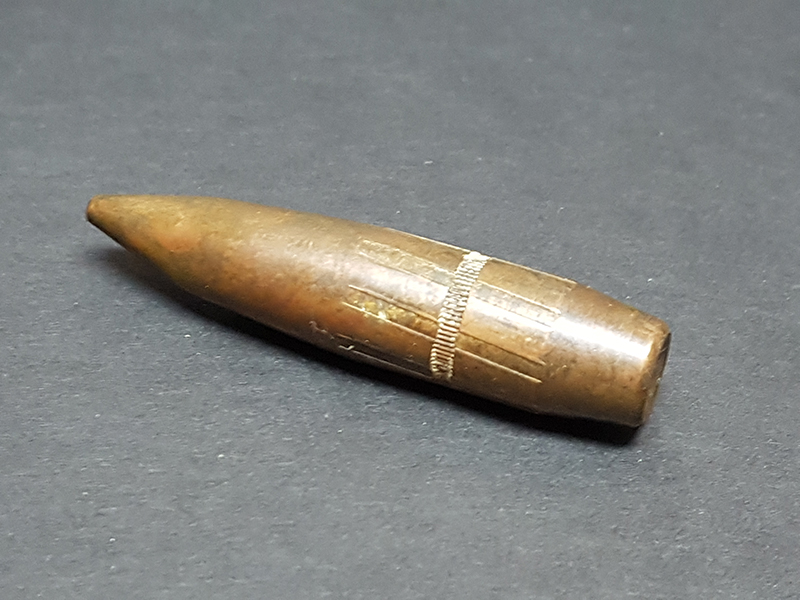Wild Blue Yonder

Un texte de Heather Darch
Paru dans le numéro Printemps/Spring 2022
Publié le : 9 mars 2022
Dernière mise à jour : 9 mars 2022
This is the tragic story of a CF-100 jet that crashed in a field just north of Bedford, Quebec killing its two-man crew on December 4th, 1956.
It was almost noon when farmer Louis Ménard stepped out of his barn into the sunshine and received the “shock of his life.” He was suddenly pelted with fast-flying frozen clumps of dirt and metal shards. At the same time, his wife Laurana Gosselin was in her kitchen preparing the lunchtime meal when she heard a “deafening noise that shook the house from the foundation upward.” She thought a bomb had exploded. Shortly after, the startled couple met together on their front lawn and discovered that their property was covered in earth, rocks and metal debris. The Ménards later learned that they were less than one kilometre away from the crash site of an Avro Canada CF-100 jet.
The CF-100 jet was on a routine flight from the St. Hubert, Quebec air base on December 4th, 1956, when it suddenly nose-dived and crashed in a terrible fiery explosion in a field just north of Bedford, Quebec killing its two-man crew. Flying Officer R.J. Bentley, aged 30, from Scott City, Kansas and Flying Officer L.H. Ollenberger, aged 25, of Maclin, Saskatchewan and both from the Royal Canadian Air Force (RCAF) 423 squadron, died instantly. Officer Bentley was a Lieutenant in the United States Air Force and had joined the RCAF in 1954. He left behind a wife and two children. Officer Ollenberger had received his wings the previous year and was also married and a father of a baby daughter. The cause of the crash was inconclusive, but investigators suspected the jet’s oxygen system failed, rendering the pilots either dead or unconscious.
It did not take long for shocked witnesses of the crash to appear on the scene as dark smoke blackened the skyline. Hundreds of curious onlookers came too and some even trampled over the crash site to collect souvenirs of the wreckage despite police orders. The dangerous scavenger hunt for mementos not only demonstrated a lack of respect and threatened the investigation, but the police were concerned that live ammunition from the accident could have ignited with the heat of the burning fuselage.
The Avro Canada CF-100 was an all-weather jet fighter nicknamed the “Canuck;” pilots good-naturedly called it the “Clunk” after the noise made in its landing gear and “the Lead Sled” because of its heavy controls. It was the first jet completely designed and built in Canada by Avro Canada Limited from 1950 to 1958 and it the only Canadian-designed fighter to enter mass production. While Canada had manufactured over 16,000 aircraft for military needs before and during the Second World War, almost all were of British or American design. Because of Canada’s small population, it was dependent upon foreign governments for aircraft to meet Canadian requirements. The CF-100 was the earliest aircraft designed and built specifically for Canadian military assignments including NORAD and NATO missions during the Cold War era.
The first flight of the CF-100 was on January 19th, 1950. It had a regular cruising speed of 760 km/hour, but could reach speeds of 890km/hour with a range of 3,330 kilometers. Although considered well-designed and safe, the Canuck was not without its tragedies. In the same year as the Bedford crash, a horrific accident of a CF-100 occurred on May 15, 1956 in Orleans, Ontario. Fifteen people lost their lives when a jet crashed into a convalescent home for nuns run by the Grey Nuns of the Cross. Among the dead were 11 sisters, a navy chaplain, a kitchen assistant and the two pilots. It was suspected that this crash was also caused by the failure of the oxygen system in the cockpit.
The CF-100 jet serviced the RCAF until the early 1960s. With the cancellation of its intended successor the Avro CF-105 Arrow, it was replaced by the McDonnell CF-101 Voodoo, but continued to serve in training programs and reconnaissance missions. After almost three decades of use, it was removed from service in 1981. Today, one can find CF-100s on display across Canada.
In September 2002, the “All-Weather Fighters’ Memorial Cairn” was dedicated in front of the RCAF Memorial Museum in Trenton, Ontario. Among the fallen airmen whose names are inscribed on the monument are the pilots Bentley and Ollenberger whose lives tragically came to an end in a snowy Missisquoi County field. Lest we forget.
Heather Darch

